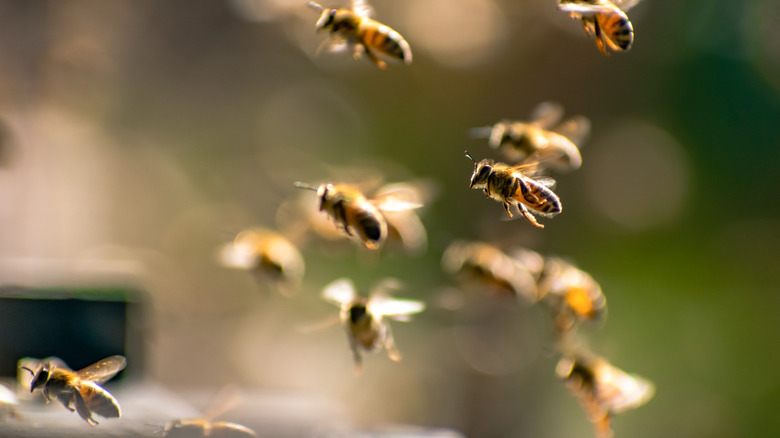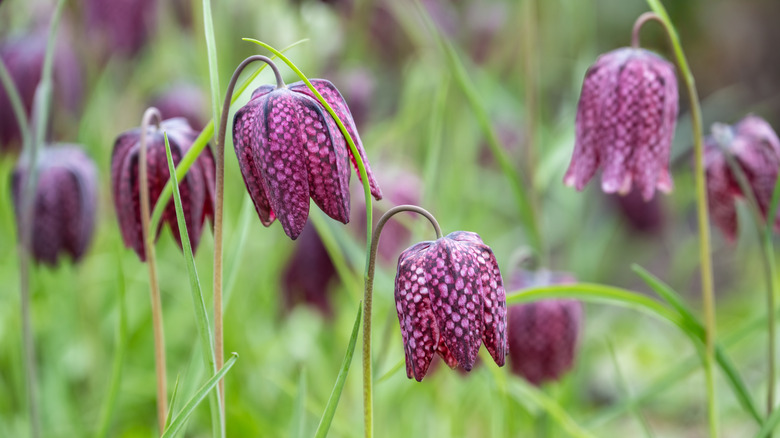The Gorgeous Purple Perennial That Loves Moist Soil And Attracts Pollinators
For gardeners, spring and summer can often seem like the busy times of the year. While autumn introduces slower days and cooler weather, it can still be the perfect time to put spade to soil in preparation for spring blooms—including those like this moisture-loving perennial that bumblebees love.
The checkered lily (Fritillaria meleagris) doesn't typically show up in the wild, but it can be a showstopper in your garden. These eye-catching plants with gorgeous flowers are low-maintenance and easy to grow, and, although they often die back and go dormant by late spring, they'll return year after year. A bit smaller and darker in color than many other spring flowers you may be familiar with, these flowers have a unique bell shape and mottled design that frequently draws comparisons to a guinea hen.
Checkered lilies can self-seed, but aren't considered invasive. Before making the decision to add this thriller flower that pollinators love, take time to research your specific area and learn more about the growing conditions that can help checkered lilies thrive. Then, if you decide that they're the right flower for you, you can add sowing their bulbs to your fall garden to-do list.
How to grow checkered lilies in your garden
While they do still need drainage, checkered lilies thrive in moist soil. These flowers are native to flood plains, so they can handle conditions that many other pollinator-friendly plants can't. Still it's important to be mindful of droughts without making the common mistake of overwatering your plant. Aside from hydration levels, checkered lilies aren't too picky about the type of soil you grow them in, providing the opportunity to cultivate their blooms in a variety of soil types and pH levels.
As far as location goes, you can grow checkered lilies in USDA Hardiness zones 3 through 8. You'll want to plant them in the fall in an area where they can receive the right amount of sunlight. Fortunately, much like with soil, their requirements for sun exposure are lax, ranging from dappled sunlight to partial shade to full sun. In warmer areas, be sure to maintain the right amount of moisture in the soil, even when they're dormant.
Overall, checkered lilies can be quite a hands-off choice. They do best when allowed to die back naturally, and they sport a resistance to a variety of pests like deer and rabbits all while attracting more pollinators to your yard. They also don't have any significant insect problems or specific diseases to keep an eye out for, making these purple perennials the perfect pick for beginners. While planting checkered lilies, you may also want to consider this stunning perennial you can plant in the fall.

